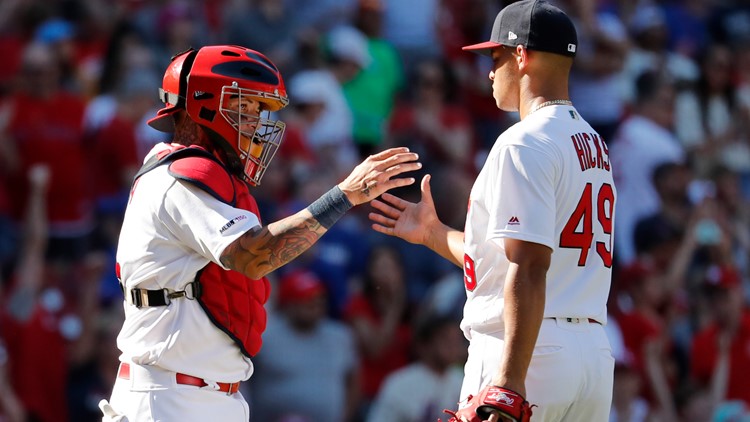There's a chilling finality about facing a young phenom in possession of all his abilities with the game on the line.
The Cincinnati Reds were down 6-3 heading into the ninth inning Saturday afternoon, but for all they know, it could have been 4-3 or 10-3.
Jordan Hicks was entering the game, bringing an arm that could rattle off a 104 mile-per-hour two-seam fastball as well as a back-breaking slider that bent around the strike zone like a Frisbee. He needed only 13 pitches to finish off the Reds, striking out Cardinal Killer, Scott Schebler, to end the game.
The save was Hicks' eighth of the season, a streak that has been on full blast since a late March defeat at the hands of Christian Yelich and the Milwaukee Brewers. The reigning MVP was destroying any pitch not thrown intentionally outside the box, and he clubbed a game-deciding double off Hicks.
After the game, I campaigned for the Cardinals to sign Craig Kimbrel, giving off the notion that the younger Hicks should mature into the role by working as a bridge arm in the seventh or a setup man. Kimbrel, arguably the best closer in baseball, is still out there, but I think the Cardinals are going be fine in the ninth. Hicks looks nearly unhittable since that fateful March afternoon.
In April, Hicks has closed out three games against Milwaukee, freezing Yelich with a slider to end a game at Busch Stadium and finalize a sweep of the division rival.
Hitters attempts at solving Hicks are becoming more feeble by the outings. He allowed three hits during that blown save on March 31. He's allowed three total hits in the month of April, spanning ten innings.
Outside of a solo home run in a lopsided game, Hicks hasn't given up much this month. If they get a piece, it doesn't go far. After all, in 89 total innings in the Majors, Hicks has only allowed three home runs. If you hit a home run off him, your next move should be buying a lottery ticket.
Control has become his friend this season. The electricity that arrived last year has led to considerable polish this season. Hicks walked 45 batters in 77.2 innings last year. He also hit eight batters with pitches, which led to a high pitch count and more stressful innings over the course of a chaotic summer. This year, Hicks has walked five in 11.1 innings, but as the season has progressed, he has cut down on the free passes.
If anyone beats him, it's his own arm. That probability has decreased this season. The walks aren't completely gone, but they are no longer hanging with the strikeout ratio.
Hicks' strikeout rate was 11.3 heading into Saturday's game, a number that should only increase as command becomes a real tool in his arsenal. Along with the wicked two-seamer that sets a new record for fastest pitch thrown in the league every month, Hicks is also brandishing a changeup to go with the slider. The changeup only makes an appearance against lefthanded batters, slicing in on their hands before disappearing around their cleats.
It's important to remind you he is only 22 years old. That's unreal and unfair for other teams to reconcile with as they develop an adhesive for the next go-around at the plate. As he gains experience and settles into a defined role, teams are going to have their hands full. Right when they figure out how to time the explosive triple-digit fastball, the changeup that breaks off around 90 mph is going to bedevil them. If they figure that out, the slider coming in around 86 mph will throw them for a loop.
Just imagine yourself at home plate. The game is close, and your bat could make a huge difference. A seemingly nice fellow is standing on the mound. He's not Jason Motte, who seemed to breathe fire underneath that massive beard during the ninth as he nervously stalked the hill and rubber in between pitches. This new guy is calm and collected, patiently waiting for you to enter the box and take your medicine.
Now, do you think triple-digit, two-seam moving heater, or do you get ready for a more subtle offering? If you guess wrong, it's only a matter of 15-18 mph difference in the pitch flying by your chest.
Don't peer down at Yadier Molina for help. He wants to catch that ball. Your odds were bad before you put on a helmet.
Once erratic, Jordan Hicks now stands as a legit door-slammer for the Cardinals. 22 years old and in charge in the ninth, it'll be something to watch this kid disapprove of hitters in the most stressful moment of the game. Having a clear cut closer is the first step towards gaining an identity in the bullpen. The better Hicks is at his job only allows the rest of the relievers to settle into their roles.
Here's the cool thing about Hicks. The best has yet to come. He's just getting warmed up.



